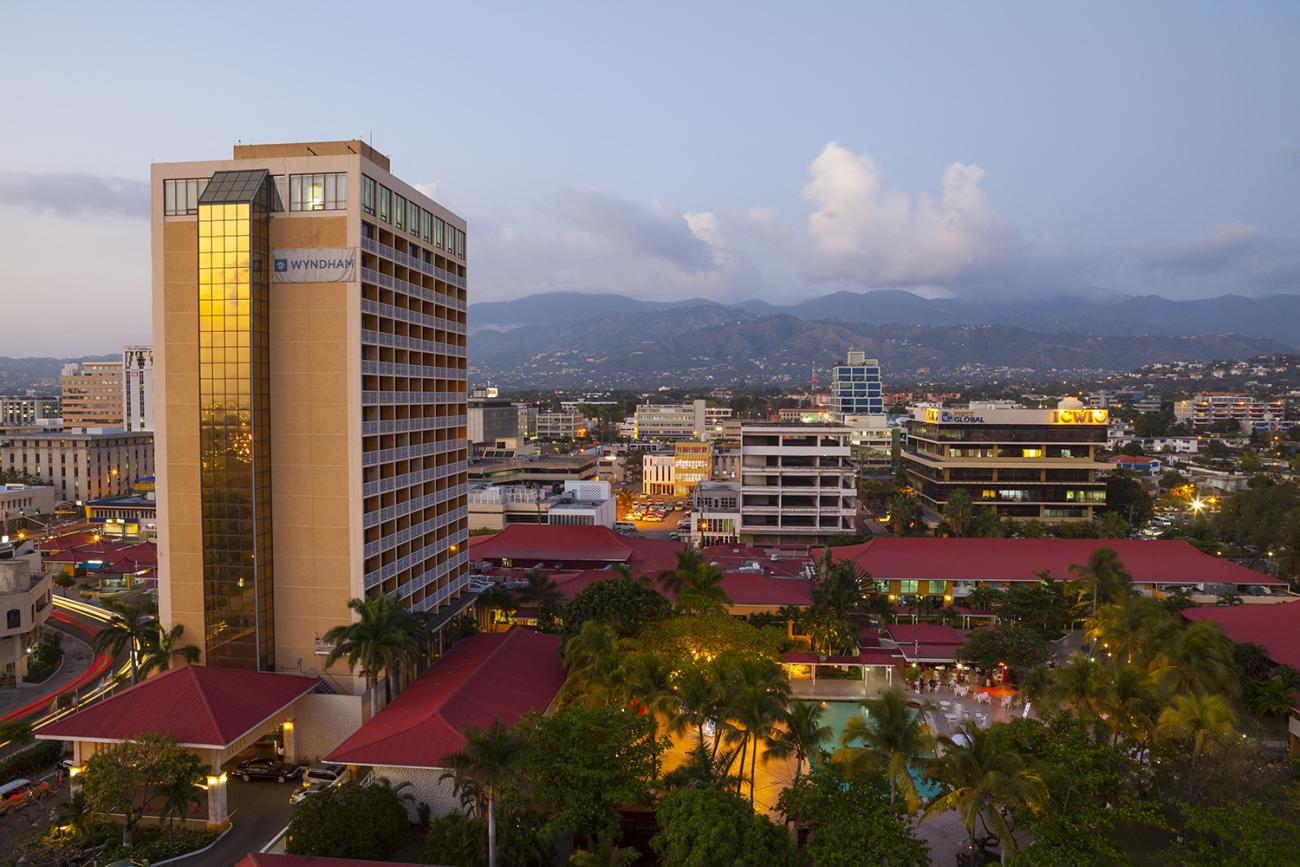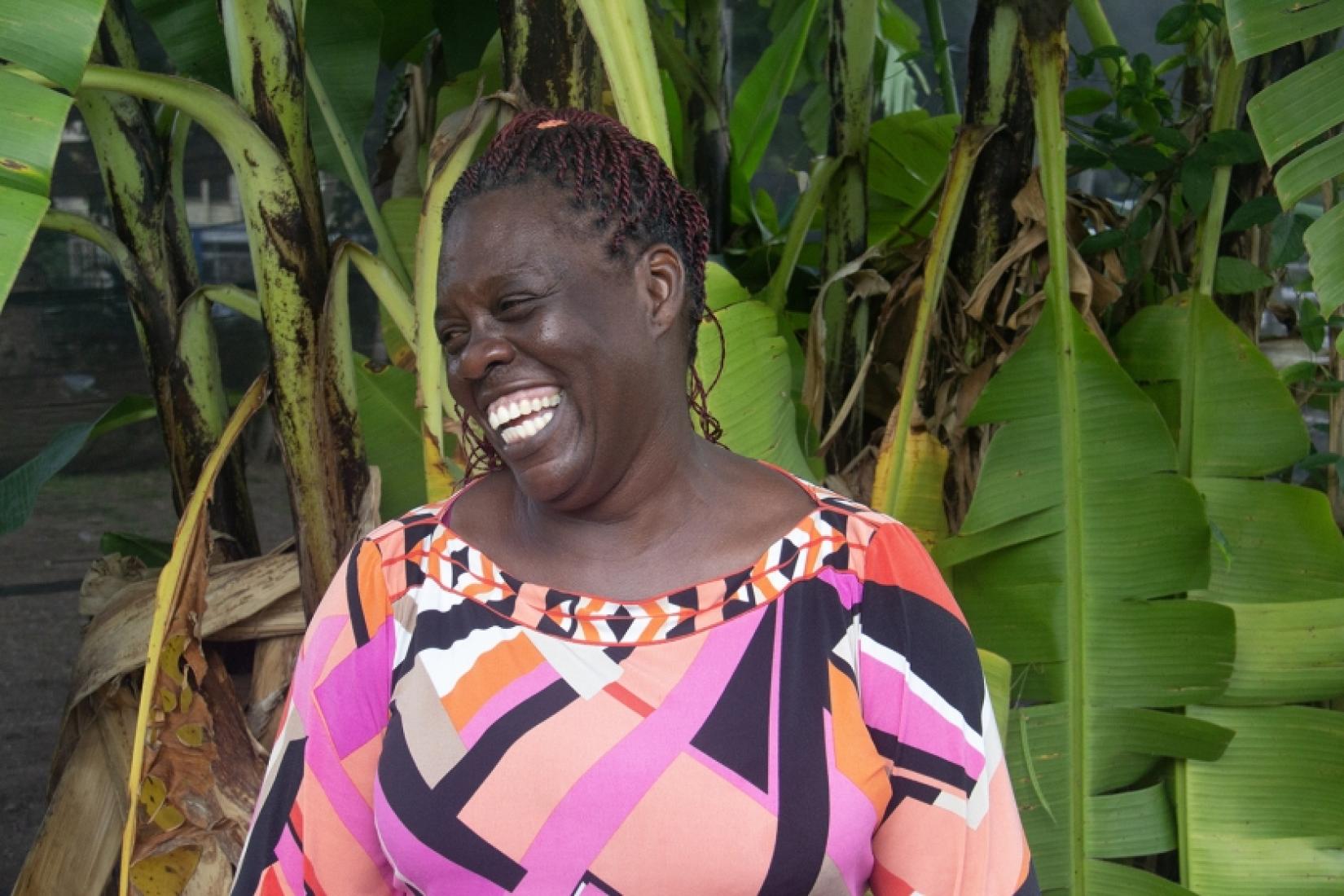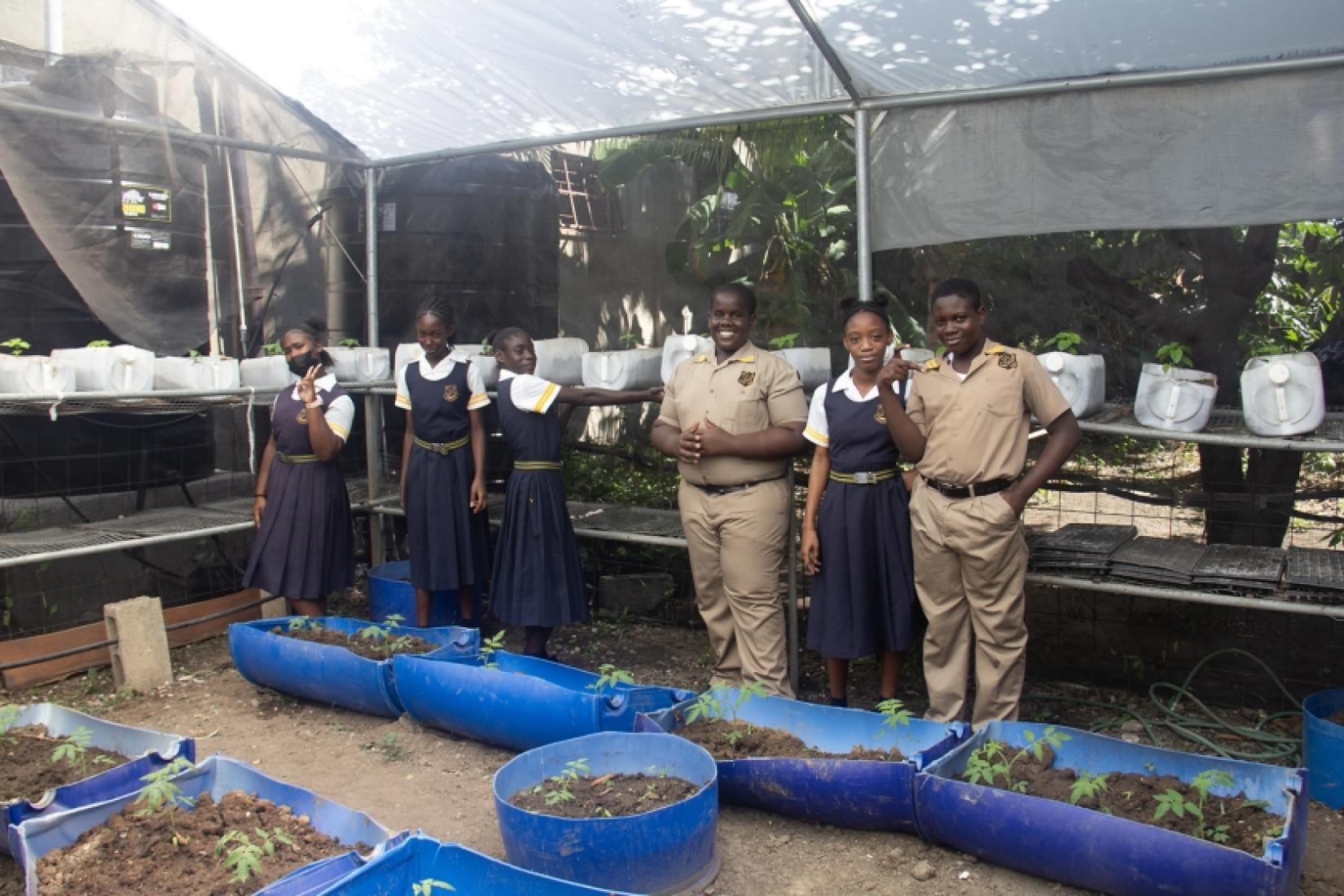As rains falter, Jamaica’s urban farmers race to adapt

An effort led by the United Nations Environment Programme (UNEP) is distributing rainwater harvesting tanks to help communities contend with climate change.
Set amid the rapidly growing city of Kingston, Jamaica’s capital, is a small commercial garden run by the community group the Abilities Foundation. Neat rows of fruits and vegetables line the plot, which helps fund vocational training for students with special needs.
Alongside the produce is a tank that harvests rainwater and a network of tubes that disperses it into the garden. That system is crucial.
While Kingston is in the heart of the lush Caribbean, climate change has caused the city’s once-reliable rains to falter, making this type of drip irrigation infrastructure a must for farming.
“I’m not giving up. I’m a fighter,” says instructor Paulette Williams, describing the foundation’s efforts to keep the garden running in the face of dryer weather.
The Abilities Foundation is one of six schools and community centres in Kingston to receive rainwater harvesting tanks courtesy of CityAdapt, an effort led by the United Nations Environment Programme (UNEP) to help Caribbean communities contend with climate change.
Funded by the Global Environment Facility, the initiative has benefitted more than 130,000 people in Jamaica, El Salvador and Mexico since its launch in 2018.

“Climate change is not a problem for tomorrow. Countries across the Caribbean are already wrestling with the fallout from this crisis,” says Juan Bello, UNEP Regional Director for Latin America and the Caribbean. “But projects like CityAdapt are showing it is possible for communities to adapt to climate change, and for countries to create a more sustainable future for their people.”
As the Earth’s climate changes, the spectre of drought is rising. By 2050, three-quarters of humanity could feel the effects of dwindling rains.
On 5 June, Saudi Arabia will host World Environment Day 2024, which this year focuses on desertification, land degradation and drought resilience.
While Jamaica is a world away, it is a theme that hits close to home for many here. The country is facing a decline in rainfall, with prolonged drier periods and more frequent and intense droughts.
As a small island developing state, the country is also exposed to several other climate-change-related hazards, such as spiking temperatures, hurricanes and sea-level rise.
Much of Jamaica’s adaptation work has turned to making agriculture more sustainable and improving food security, which has been a government priority for years. Researchers, for example, are examining how endemic crops can better resist droughts, stave off flooding and reduce temperatures.
“Agriculture is one of the pillars of the Jamaica National Adaptation Plan,” says Claire Bernard, from the Planning Institute of Jamaica, which supports efforts to adapt to climate change. “And the lessons learned from the CityAdapt project will allow us to upscale the good practices into other communities.”

Jamaica is hoping that by encouraging urban agriculture, it can improve food security. The challenge: metropolitan areas, such as Kingston, usually have little room for farming. That is why CityAdapt focused on making the most of Kingston’s limited agricultural space.
At the Kingston Technical High School, a so called “container garden” allows the cultivation of plants in pots, boxes, barrels or other types of vessels rather than directly in the ground. The setup is more efficient than traditional farming and helps to conserve soil, both important benefits when adapting to a changing climate.
In a Monday-to-Friday rush of classes, exams and playgrounds, taking care of the greenhouse can also have therapeutic benefits for students.
“This is like a haven where we can find peace and quiet,” says student Samara Richards.
While CityAdapt has come to an end after five years of implementation, lessons learnt can serve as a strong foundation for adaptation action to continue, say those involved.
“It is our responsibility to build capacities at the local and community level, so that all citizens can be leaders themselves,” says Vincent Sweeney, the head of UNEP Caribbean Sub-Regional Office.“Each school, each neighbourhood, each action counts. Every person counts. That is how we ensure the sustainability of the project and effective adaptation to climate change.”
A growing number of communities in Jamaica are turning to the natural world for remedies to drought and the larger climate crisis. These so-called nature-based solutions can run the gamut from planting mangroves to protect from storms to shoring up landslide-prone hillsides with native brush. Measures like those can help protect ecosystems, enhance biodiversity, improve water quality, protect lives and create economic opportunities.
They are also cost-effective, which experts say is critical. Developing countries need between US$215 billion and US$387 billon a year to adapt to climate change but only have access to a fraction of that total. Research shows that investing in adaptation now will minimize climate-related costs in the future.
As Williams said in Jamaican patois, “Every mickle mek a muckle”, or, in other words, “Every little thing, when combined, can have a great impact.”
.........................................
World Environment Day on 5 June is the biggest international day for the environment. Led by the United Nations Environment Programme (UNEP) and held annually since 1973, the event has grown to be the largest global platform for environmental outreach, with millions of people from across the world engaging to protect the planet. World Environment Day in 2024 focuses on land restoration, desertification and drought resilience.
The CityAdapt project is officially titled Building Climate Resilience of Urban Systems Through Ecosystem-based Adaptation in Latin America and the Caribbean. For more information on CityAdapt and UNEP’s work with the Global Environment Facility on Climate Change Adaptation, contact Jessica.Troni[at]un.org
........................................
This story was first published by UNEP.
Written by




